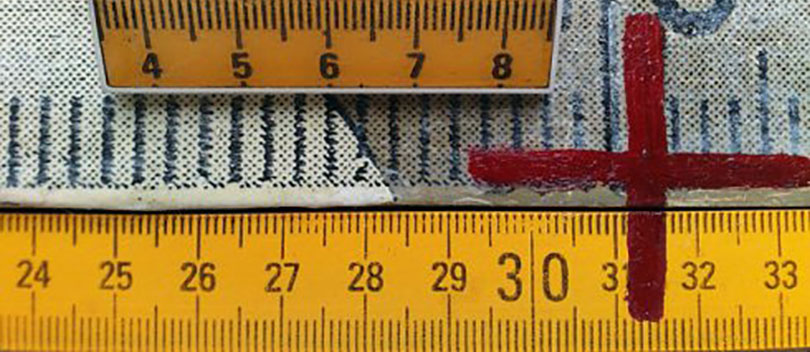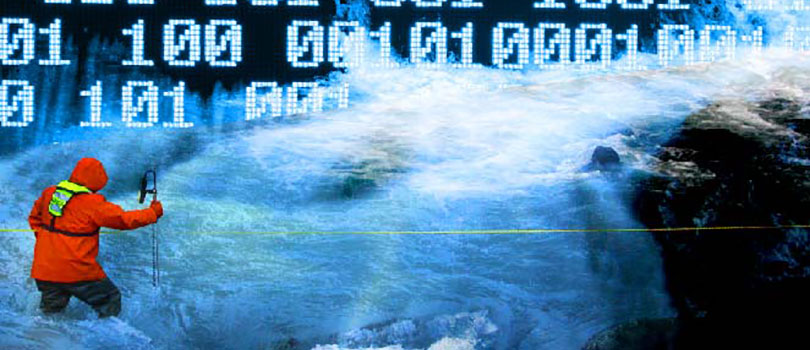
Will the US Geological Survey Go Metric?
I was asked the other day if I thought that the USGS would ever go metric.
I am unqualified to answer this question but I care about the implications of the issue. I started my field career working in Imperial units (also known as English) before the Water Survey of Canada converted to the International System of units (SI, commonly known as metric) in 1980 so I have a firsthand experience with the process and believe it would be much easier now with the advantage of modern electronic technology.
In order to coordinate data sources to tackle the ‘wicked’ 21st century problems of a stressed planet we will need to converge on international standards for data management and data publication. That a stakeholder like USGS remains a hold-out on one of the most basic of international standards speaks volumes to the challenges posed by jurisdictional policy barriers to international cooperation. All of the costs of the change would be borne by the USGS but many of the benefits would be distributed worldwide. Furthermore USGS would still be obliged to provide reports in the units specified in legal documents for water licensing and regulation.
One major benefit to the world would be having the USGS Techniques and Methods papers published using SI units. The USGS commitment to updating these documents with new and emerging technologies and their commitment to free and open access are major advantages for any monitoring program needing a set of standard operating procedures.
These very rigorous, articulately written, documents would easily be the global industry standard if only they were written to International Standards.
The SI system of units is water-centric which should be argument enough to justify metrication. Dimensional transformations from flux to volume to mass to force can be calculated in the head to a first order of approximation. Smooth scaling over orders of magnitude further reduces the likelihood of undetected errors.
I challenge anyone to look at flow data in cfs and come up with a first order approximation of totals in acre feet without using a calculator.
It is important to understand the relation between sensor resolution and reporting resolution. Sensor resolution is the smallest change a sensor can detect in the quantity it is measuring. In the analog days, this was about the thickness of the trace on a recorder chart, which for a standard chart scale was about 0.01 foot (0.003 m). This, conveniently, was about the same as the data accuracy for a staff gauge reading. Traditionally, it made a lot of sense to report the data at a resolution of 0.01 foot.
The achievable resolution of modern pressure transducers can be 0.01% or better even under difficult environmental conditions. For a 5 m range that would mean 0.0005 m change in stage is detectable. The accuracy of the data is still limited by reference gauge readings but detection of change within the time series is no longer limited by the recording device. The reporting resolution of 0.001 m used in SI systems provides a much better match to modern technology.
Consider the case where stage is rising at a rate of 0.006 m per hour.
A USGS gage would report the change in two steps of 0.01 foot whereas an SI system would report the change in 6 steps of 0.001 m. Therefore the SI system will represent the true dynamics of the underlying signal more accurately even though both systems have the same uncertainty with respect to gauge datum.
As I write this the discharge at the Stikine River at Wrangell (15024800) is 33,400 cfs and the discharge at the nearest upstream gauge is 219 m3s-1 at the Stikine River at Telegraph Creek (08CE001). There are a number of things that are interesting about this. First, it is fantastic that with a few mouse clicks I can access this data in near real time. Second, what a pain it is that the data are not in the same units and if I want to compare runoff then I am given the drainage area for Wrangell as 19,920 mi2 and the drainage area for Telegraph as 29,000 km2. Third, it is interesting that both agencies report data to 3 significant figures (actually the preliminary WSC data are not rounded for real-time publication but I want to make a point). The reporting resolution of the USGS data implies that the detectable change in discharge is 100 cfs (i.e. from 33,350 to 33,450) which is 2.83 m3s-1. The reporting resolution of the WSC data implies that the detectable change in discharge is 1 m3s-1 (i.e. from 218.5 to 219.5) which is 35.3 cfs. Both agencies use very similar technology, training and operating procedures so which one reports at a resolution best matching detectable change? The answer may be different than it used to be.
Part of me is inclined to root for under-dog legacy units like the miner’s inch and acre foot but it is fairly clear that these anachronisms are not going to prevail. The Omnibus Trade and Competitiveness Act of 1988 designated SI as the preferred system of weights and measures but stopped short of regulation, leaving US industry to adopt the metric system voluntarily. NASA adopted the SI system in 2007.
The USGS is one of the most trusted and respected agencies in the world. I don’t know if metrication is currently on their road map but when they do come to that fork in the road I am sure their choice will be well-informed by consideration of science, technology, societal benefits and stakeholder interests.


